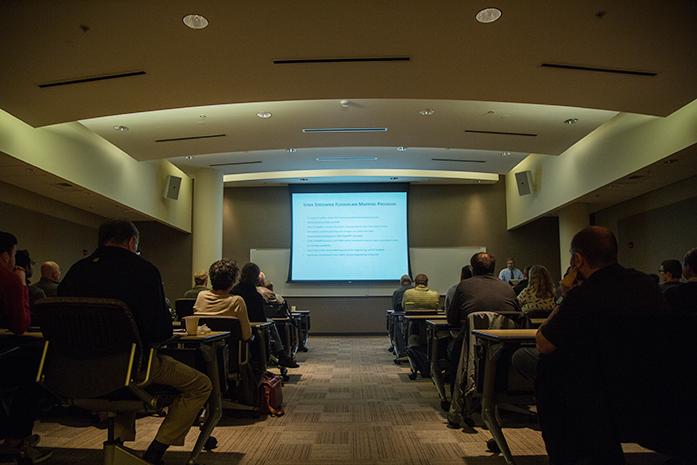By Jenna Larson
Since the 2008 flood in Iowa City, the Iowa Flood Center has worked to update the floodplain map.
Professor Larry Weber of the University of Iowa IIHR — Hydroscience & Engineering, said that when the flood occurred, experts alerted state and federal officials that the maps needed to be updated and that many rural areas were not mapped.
Before the flood, floodplain maps were extremely outdated, said Witold Krajewski, the Flood Center director.
“The utility of the information during the flood was inadequate,” he said.
After the flood, the federal government awarded a $15 million project to the state of Iowa in order to map all counties, Weber said.
The grant was used to fulfill the idea of having an updated floodplain mapping system for both urban and rural areas in the state, he said.
“A large portion [of the grant], $12.5 million, was awarded to the Iowa Flood Center to do the technical work of the mapping,” Weber said.
With the grant, engineers used LIDAR technology allowing high-accuracy elevation data to be collected more quickly, Krajewski said. LIDAR is a remote sensing method used to examine the surface of the Earth, according to the National Oceanic and Atmospheric Administration.
“[With LIDAR], we can see details of bridges, roads, even single trees,” Krajewski said. “[From this], we were able to figure out how water flows when there is too much water and convert it to maps.”
The center starting utilizing the grant six and a half years ago, and officials plan to conclude their mapping at the end of this year.
“One of the biggest challenges was the scale of the project,” said Nathan Young, the Iowa Flood Center associate director.
Young said making sure everything was done in the same way to make sure they had uniform applications and same methodology across the state was an obstacle.
“[Another obstacle was] finding opportunities within the federal government to get funding to take our data products beyond information use and apply them to the National Flood Insurance Plan,” Young said.
Weber said that when the project is complete, there will be maps for nearly all of the counties in Iowa.
Out of the 99 counties, 85 will have floodplain maps. The U.S. Corps of Engineers will map the remaining 14 counties.
It is still the responsibility of the Federal Emergency Management Agency to certify the maps that were created by the center so it becomes regulated by the National Flood Insurance Program, Young said.
In order to ensure the floodplain maps are accurate throughout time, Weber said, researchers created a digital mapping system.
“We wanted to create a digital mapping system so that all of the work that goes into this project is saved and stored in one digital library so if land use changes or changes in weather or climate happen, and we decide we want to update the maps for Iowa, it should [take] six and a half months,” he said.
Because this digital library will shorten the time it takes to update mapping, additional grants that will be used in the future would be less costly, Weber added.
Previously, for people to access the maps to see if they are in a floodplain-mapped area, they would need to access it by paper. Now, Weber said, they are able to go online freely to check the maps in regard to where they live.
“Because we are still in the final stages, all 99 counties are not available [online],” he said. “By the end of the calendar year, nearly all of them will be available.”
Young and his team are working on finalizing their work.
“We are finalizing documentation, finalizing a few data stuff to prepare for publication and get them posted,” he said.
Young hopes that the holidays don’t interfere, so he and his team are working on finishing in advance.







